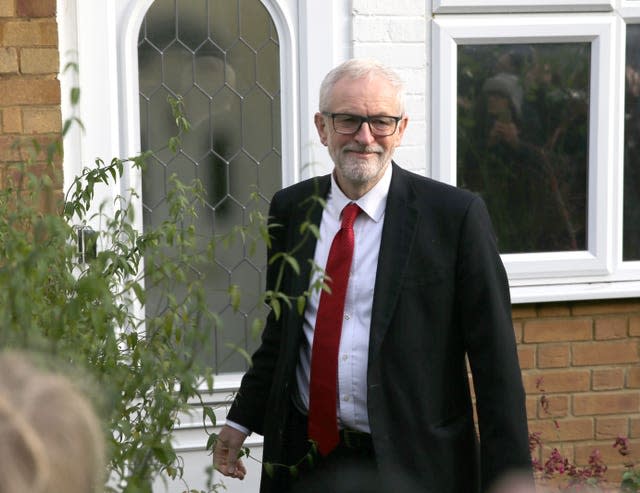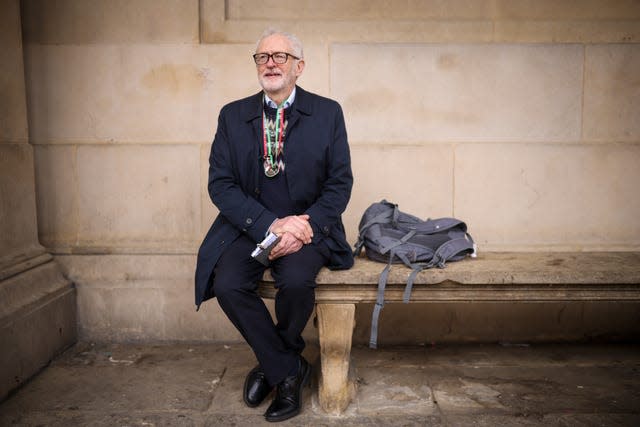Jeremy Corbyn: From Labour leader to party expulsion

After more than half a century, Jeremy Corbyn’s association with the Labour Party has ended.
First elected to Parliament in 1983 as MP for Islington North, Mr Corbyn rose from rebel backbencher, regularly voting against the party whip, to the shock winner of the party leadership contest amid “Corbynmania” in 2015.
Under his turbulent time as leader, Labour received its biggest election upsurge since 1945 in the 2017 snap general election, before suffering its worst defeat since 1935 in 2019 against Boris Johnson.
More than three years after Mr Corbyn was suspended from the Labour party, he will be standing as an independent candidate in the north London constituency, where he has been the MP for more than 40 years, at the upcoming General Election.
The 74-year-old explained his decision in an article for his local paper, the Islington Tribune, appealing to Labour voters to be understanding of the move while vowing to represent the principles of “social justice, human rights and peace”.
In October 2020, Mr Corbyn was formally suspended from the party he had been a proud member of since the age of 16 following the equalities watchdog’s scathing assessment of how Labour handled antisemitism allegations under his leadership.
At the time, Mr Corbyn said he did not accept all the Equality and Human Rights Commission’s findings, which included political interference in complaints by his office, and claimed that the scale of the problem had been “dramatically overstated”.
His successor and north London neighbour, Sir Keir Starmer, who pledged to rid the party of the “stain” of antisemitism, suspended the former leader following the comment.
Mr Corbyn appealed for “calm” within the party and for Labour members to remain in the party and “make the case” for left-wing values internally.

His suspension and eventual expulsion marked a gradual fall from grace after what many felt was an incredible rise up the Labour ranks following years on the backbenches.
The veteran rebel and avid gardener was put forward for the leadership by fellow left wingers as it was seen as “his turn” to stand, with seemingly little hope of success, after Ed Miliband quit in the wake of taking the party to defeat in 2015 against David Cameron.
But something unusual happened, Mr Corbyn appeared to catch a mood on the centre left as Labour members insisted they needed a more “genuine” leader.
The opposition to the Corbyn surge was also fractured when neither Yvette Cooper nor Andy Burnham was willing to stand down to try and blunt the rise of the Corbynistas.
The result was that, in September 2015, Mr Corbyn romped home on the first ballot with a commanding 59.5% of the vote.
The bulk of the parliamentary Labour Party was perplexed at the turn of events, though the majority of the rapidly swelling membership was delighted.

Between May 2015 and January 2016, Labour Party membership reportedly rose from around 200,000 to almost 400,000, with much of that surge attributed to support for Mr Corbyn.
Tensions soon exploded over the June 2016 Brexit referendum.
Critics accused the party leader of not taking the situation seriously enough, and polls showed that 40% of Labour supporters did not know where their party stood on the key issue as the closely fought referendum loomed into view.
In the aftermath of the surprise Brexit vote, he faced a shadow cabinet rebellion led by then-foreign affairs spokesman Hilary Benn.
Mr Corbyn moved quickly to sack the son of former left wing standard bearer Tony Benn, which led to a mass exodus from the shadow cabinet.
The Labour leader refused to be bowed, and appointed supporters to fill the vacant spaces as he saw off a challenge to his leadership by Owen Smith, increasing his backing among party members in the process with 61.8% support in the contest.

Mr Corbyn was re-elected Labour leader with a bigger mandate than before, and then faced Theresa May’s snap general election in June 2017.
Dubbed “Corbynmania” by the media, his popularity among Labour’s young supporters continued as hundreds of people turned out to hear him speak at hustings across the country and crowds at Glastonbury Festival chanted his name as he took to the Pyramid stage.
Despite some early polls putting Labour more than 20 points behind the Tories, the party received its biggest election upsurge since 1945 and helped deprive Mrs May of a Parliamentary majority.
Mr Corbyn used the electoral boost to solidify his position, but continuing controversy over the way Labour was dealing with antisemitism allegations among members dogged the party.
The Labour leader tried to walk a tightrope on Brexit in the run-up to the snap December 2019 general election, insisting he would seek new terms on EU membership, but refusing to say which option he would back in a subsequent referendum.
Boris Johnson’s blunt “get Brexit done” message smashed all before it, and Mr Corbyn’s hopes of a socialist victory were left buried under the collapse of Labour’s so-called “red wall” in Wales and Northern England.
He stepped down as party leader after Labour suffered its worst election result since 1935 as Mr Johnson won a landslide.
Although Mr Corbyn has been sitting as an independent MP for almost four years, his formal ousting from the party of which he has been a member for almost 60 years marks a new chapter in his decades-long career.

 Yahoo News
Yahoo News 
